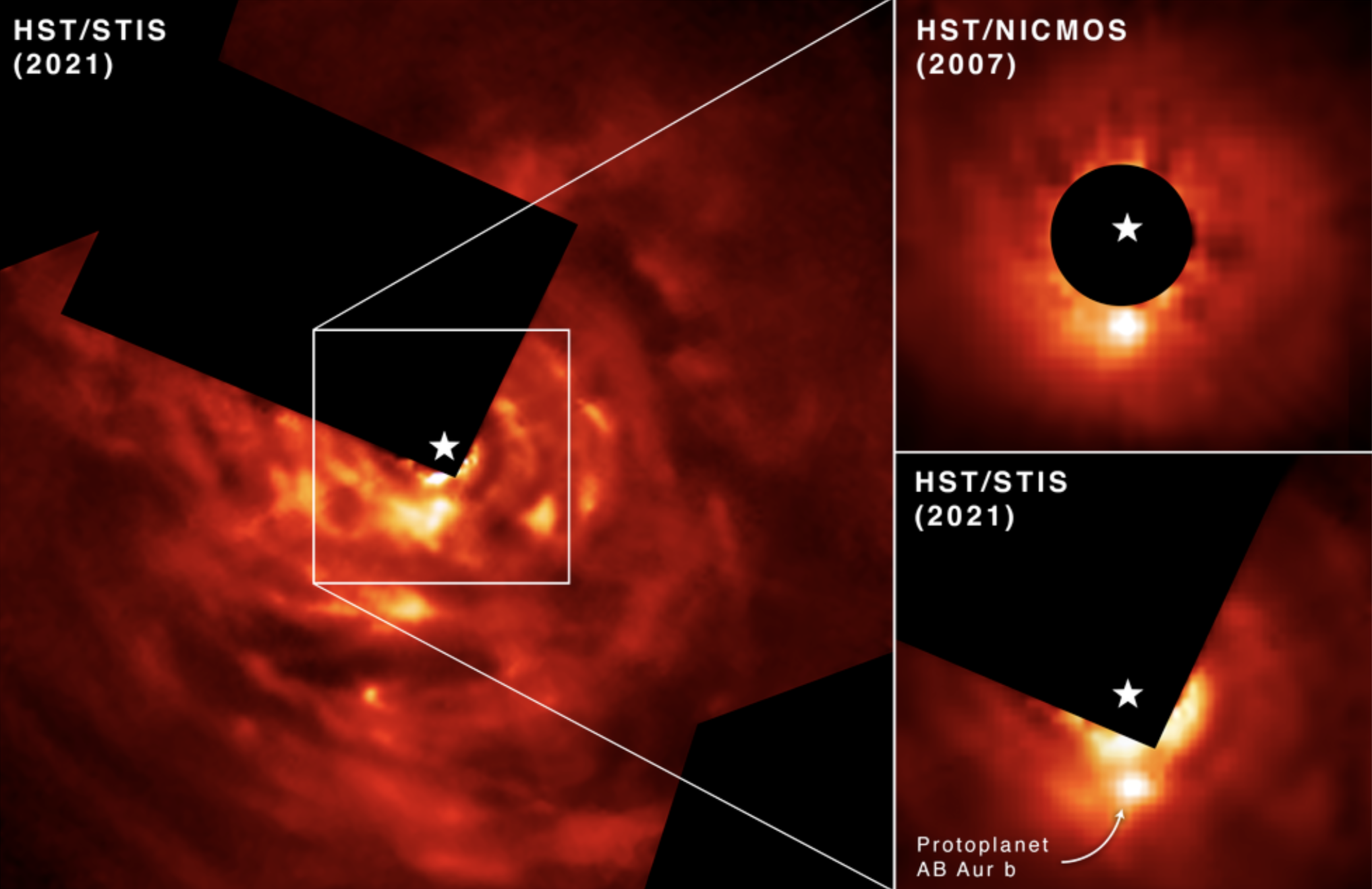A recent study published in Nature Astronomy may have revealed the first visual evidence confirming the formation of a gas giant planet via the controversial disk instability method, which was first proposed by Carnegie’s Alan Boss in 1997.
Young stars are surrounded by a rotating disk of dust and gas--the raw material from which planets are born. The method by which rocky planets like our own Earth are formed is widely agreed upon. However, the formation process of gas giants like Jupiter is one of the most polarizing questions in astrophysics. There are two main ways we think gas giant planets could form in these protoplanetary disks. We study both at the Earth and Planets Laboratory.

Core Accretion
The classic planet formation method is core accretion. In core accretion, rocky protoplanetary debris swirls around the star, bumping into other debris, sticking together, and slowly collecting mass. In this way, a gas-giant first forms a large, mostly rocky, core with enough mass—and hence gravity—to pull in gas from the surrounding disk to form a thick atmosphere, eventually becoming huge gas worlds.
This proposed method works best when the planet forms close to the star, where there is enough debris to eventually build the massive planets.
Disk Instability
The competing—sometimes described as heretical as it is so unpopular amongst theoreticians—method is disk instability. In this version of events, huge, uneven swaths of dust and gas from the protoplanetary disks are big enough to create their own gravitational centers and condense in on themselves to form protoplanets—no need for a rocky core or increasingly larger debris collisions.
Because of this, disk instability explains the formation of gas giants further out in the protoplanetary disk, where there is not enough debris for the core accretion method to work.
It’s possible, or even probable, that planet formation is some mix of the two. “Carnegie is a great place to work”, Boss says, “as it allows heretics like me to pursue ideas that may take decades to pan out.”
New evidence for disk instability
The team behind this recent study used the Hubble Space Telescope to directly image a baby planet forming around the star AB Auriga over a 13-year span. What they discovered looks a lot like a giant planet forming far away from its star—indicative of the disk instability method.
The new, hotly debated planet is called AB Auriga b.
"This new discovery is strong evidence that some gas giant planets can form by the disk instability mechanism," explained Boss. "In the end, gravity is all that counts, as the leftovers of the star-formation process will end up being pulled together by gravity to form planets, one way or the other."



